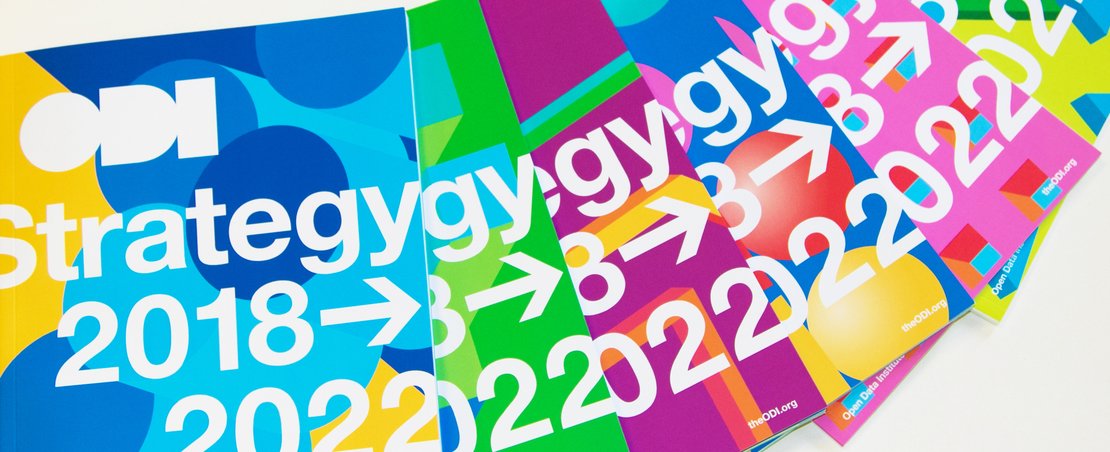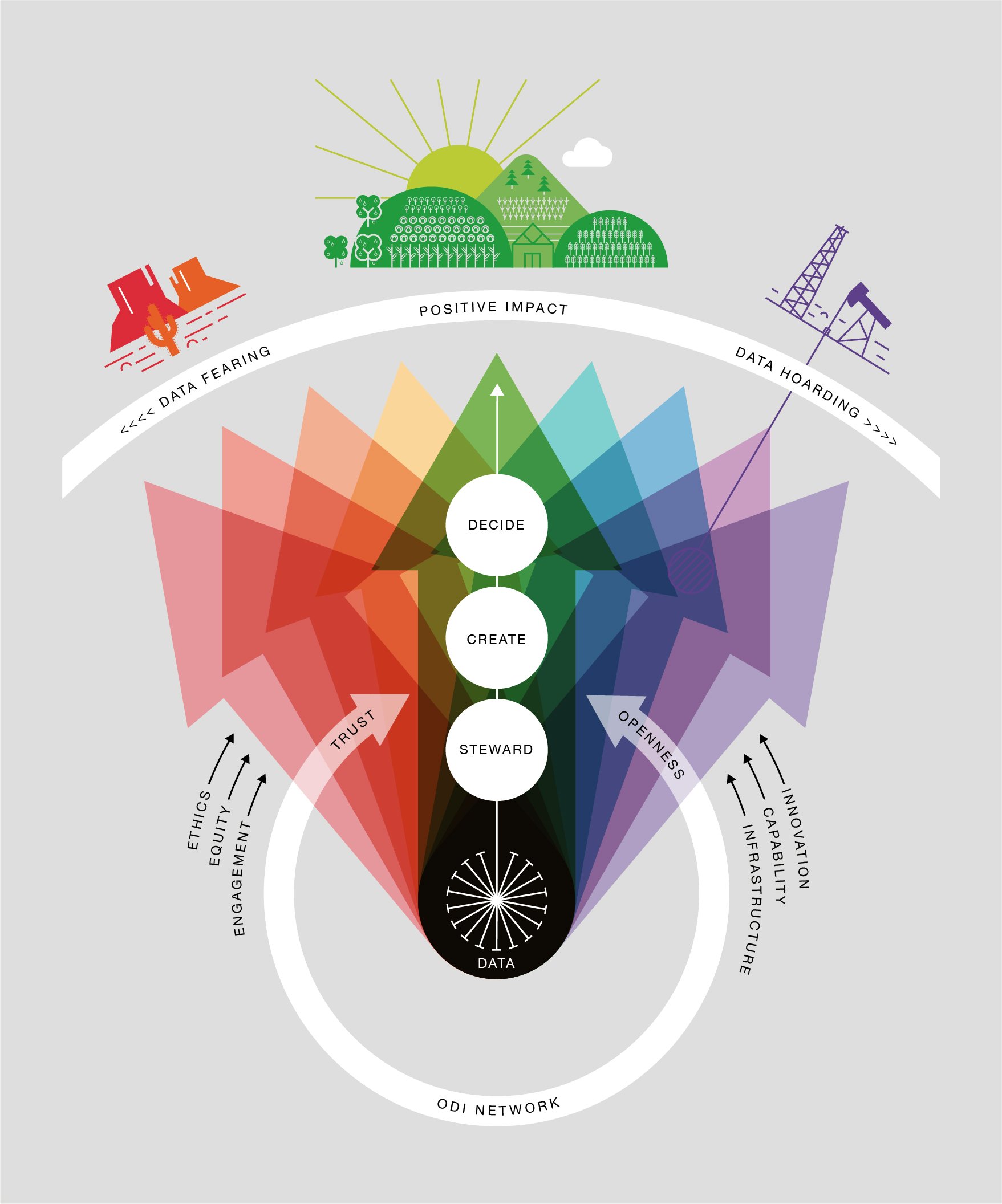
Today we are publishing our first ever ODI Strategy.
In it, we set out our mission to work with companies and governments to build an open, trustworthy data ecosystem.
We have not had a written strategy before at the ODI. Part of the reason for that was scepticism about the value of a strategy. Strategies don't get things done. And when you're building something new and learning quickly, strategies can seem overly constraining and divorced from the day-to-day.
What strategies can do, though – and what we aim to do with ours – is give a language and a framework to talk about what we do, why we do it, how we do it, and what direction we’re heading in. The process of writing it has given us an opportunity to review what we've done, look at what others are doing, and work out where we want to go.

Theory of change
We want people, organisations and communities to use data to make better decisions and be protected from any harmful impacts.
At the heart of our strategy is a description of what’s needed to achieve that vision – our theory of change. It describes how we get value and impact from data through its collection and maintenance (stewarding), analyses and products, and – most importantly – impactful, data-informed decision making.
We have seen data transformation programmes fail to unlock the value of data when they don't address all three of these steps. They have commonly focused on data publication without investing enough in driving demand from data users and understanding what decision makers need.
Our theory of change also identifies trends that could threaten the greatest impact from data being made. One threat is a data hoarding approach, an “oil field” where misconceptions about the value of data leads to data monopolies, reduced innovation and invasions of privacy such as the recent Facebook/Cambridge Analytica scandal. Another is a data fearing approach, leading to a “wasteland” of missing, inaccurate and non-representative data either through giving false details or withdrawing consent for use.
To combat these threats, we need to build both openness and trustworthiness. These will help us to create a diverse, sustainable and well-managed “farmland” and create the best social and economic value from data for everyone. This means working with and learning from stewards, creators and decision-makers along with those who influence them – such as advocates, advisors, suppliers, media, researchers and regulators.
More specifically, it means applying an open culture to the three pillars of how data is used in our economies: a data infrastructure that is as open as possible; data literacy and capability for all; and open innovation. Equally, it means putting in place practices that ensure the way data is collected and used is trustworthy and just, including building ethical considerations into data collection, management and use; ensuring there is equity around who accesses, uses and benefits from data; and engaging widely with affected people and organisations.
These six areas make up our manifesto for change.
I have been sketching a version of this diagram in meetings since we started working on it in the middle of last year. Each one of those conversations has helped us refine the drawing and the telling. I've found it particularly helpful to map this general story of how data is working in society to specific sectors and ecosystems, such as those around OpenActive, Publish What Your Pay, 360 Giving and Open Contracting, creating maps which help identify gaps and areas that require further activity or investment in those sectors.
What we do
The theory of change is useful to understand why we do what we do:
We work with companies and governments to build an open, trustworthy data ecosystem.
We focus on organisations in the private and public sectors because they are the largest holders and users of data: what they do with data has a massive impact on everyone’s lives. We collaborate with other organisations – such as Open Knowledge International and the Web Foundation – who focus on other parts of the ecosystem.
Our strategy also pulls out three key levers: general approaches that we've found successful in creating change. These are:
- Sector programmes – coordinating organisations to tackle a social or economic problem with data and an open approach
- Practical advocacy – working as a critical friend with businesses and government, and creating products they can use to support change
- Peer networks – bringing together peers in similar situations to learn together
None of these approaches are mature yet; we are only five years old, in a rapidly changing domain. We have had some successes and some failures. My hope is that by naming them, and seeing all our work in relation to them, we can refine their definition, find and describe patterns around what works and what doesn't, and learn how to assess the appropriate flavour or mix of activities that works in a particular context.
The future
Like other mission-driven organisations, our strategy needs to be as much about how we become the organisation we want to be as how we achieve the change we want to see in the world. In that vein we have identified three directions of travel that will help us increase our impact without growing in size: having a greater international presence; partnering more with others; and productising what we do so we can do it more quickly and effectively.
How far we manage to travel in those directions over the next five years will depend on the work we win, the partnerships we build, and the support we get.
I hope that this strategy helps you to understand the ODI as much as writing it has helped us understand ourselves. We hope that being clear about our vision and our approach will help us to collaborate with our international members, partners and broader community.
If you would like to talk to us about collaborating, partnering, supporting our work, or anything else, we’d love you to get in touch at [email protected].
Jeni Tennison is CEO at the ODI. Follow @JeniT on Twitter